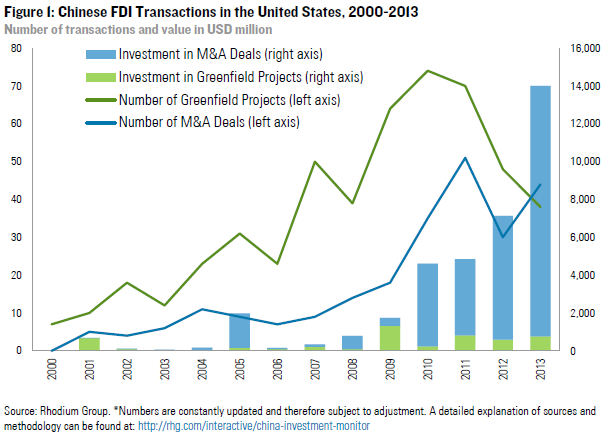China Leads In Foreign Direct Investment
Post on: 16 Март, 2015 No Comment

English: John Deere 4010 Diesel (model manufactured from 1960-1963) at the John Deere Pavilion in Moline, IL. (Photo credit: Wikipedia)
For the first time since 2003, China has surpassed the United States as the world’s largest recipient of global foreign direct investment (FDI). During the first six months of the year, FDI flows to China totaled $59 billion, a slight decline from $61 billion in the first half of 2011. Meanwhile, FDI flowing to the U.S. reached $57.4 billion, a decline of 39.2 percent from a year earlier, according to the Global Investment Trends Monitor released by the United Nations Conference on Trade and Development.
Although China re-claiming its leadership in FDI had as much to do with the fall off in FDI flows into the U.S. as it had to do with events in China, it nonetheless underscores China’s continued attractiveness as a destination for foreign investment. Although economic growth has declined to its current level of 7.5 to 8.0, percent due to a slowing rate of growth in infrastructure spending by the government and relatively restrictive monetary policies, the China economy is undergoing a fundamental shift where domestic consumption is becoming one of the key drivers of the economy.
For example, retail sales growth ticked up to 14.2 percent in September, compared to 13.2 percent in August. As a result, the reasons companies give for investing in the country have changed. According to Zhang Xiaoji. director of the Foreign Economic Relations Development at the Development Research Center of the State Council, a top government think tank, “China’s biggest attraction to global investment is now its huge market, contrasting the long-time low cost, which is now ranked third or fourth.”
In addition to growing consumer demand, investors will be heartened by several economic measures released last week providing further evidence that the Chinese economy may have indeed turned the corner.
The most recent figures for the Purchasing Manager’s Index (PMI) indicate that the Chinese economy has regained some manufacturing momentum. The PMI hit 50.2 in October, up from 49.8 in September and 49.2 in August, according to the National Bureau of Statistics. A reading above 50 indicates an expansion in manufacturing.
Despite lending curbs and administrative restrictions on home purchases that have been in place since 2010, housing prices have also re-gained momentum. House prices in China’s 100 major cities rose further in October, marking the fifth consecutive monthly increase this year. The average price of new homes in these 100 cities increased 0.17 percent month-on-month to 8,768 yuan ($1,390) per square meter last month, the same growth rate as in September. Average new-house prices in 10 key cities, including Beijing and Shanghai, rose 0.33 percent on a monthly basis to 15,625 yuan ($2,508) per square meter.
Apart from the general economic improvement that seems to be underway, new sectors of China’s economy are opening up for overseas investors and companies as the country’s priorities shift. Samuel Allen. the chief executive officer of Deere & Company (NYSE:DE), the world’s largest agricultural machinery manufacturer, said last week that the U.S. company will invest further in China over the next few years, as the country strives to update and improve the agricultural sector to feed its growing population. China’s government’s plan is to introduce more advanced agricultural machinery in order to raise the country’s grain yields by 20 to 30 percent.
“We will continue to invest in China, on localizing our production facilities, on research and development centers, and by optimizing our current facilities,” Allen told a news conference in Harbin, the capital of Heilongjiang province. Allen was there to open Deere’s latest site in the country, a 1.6 billion yuan ($250 million) investment covering 400,000 square meters that encompasses R&D facilities and an assembly plant. The plant will produce nearly all of Deere’s agricultural machinery models.
Despite the recent economic slowdown, Allen said that John Deere has a solid perspective for its business in China over the next 20 to 30 years, partly because of the sheer size of the country’s market, but also because of its need to boost food production as the population rises.














